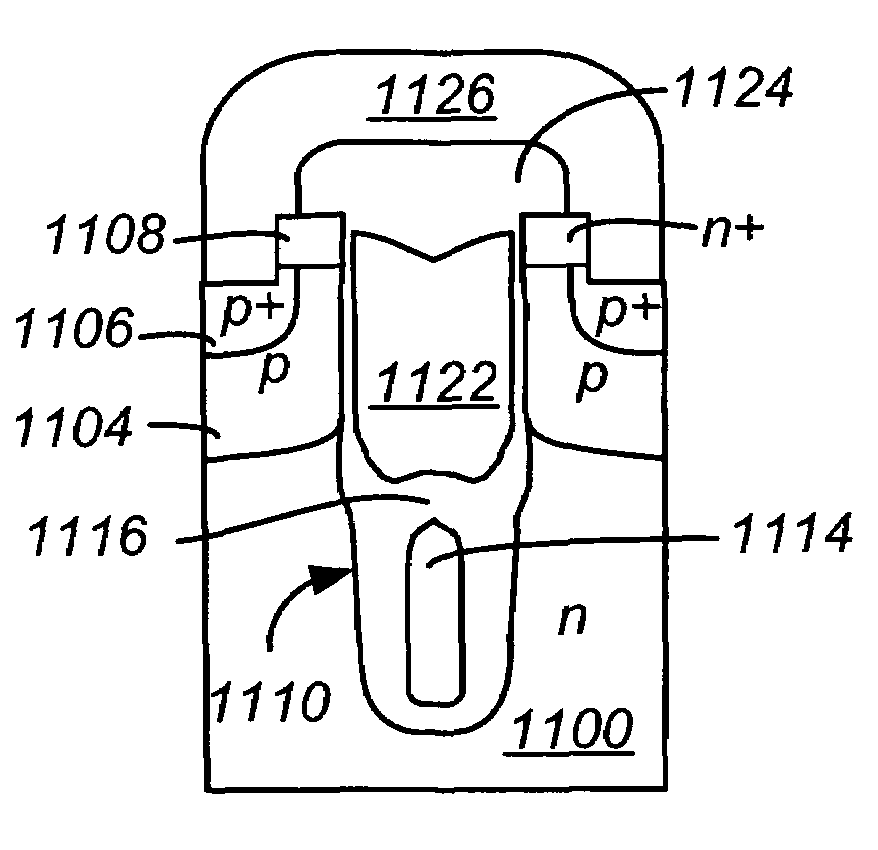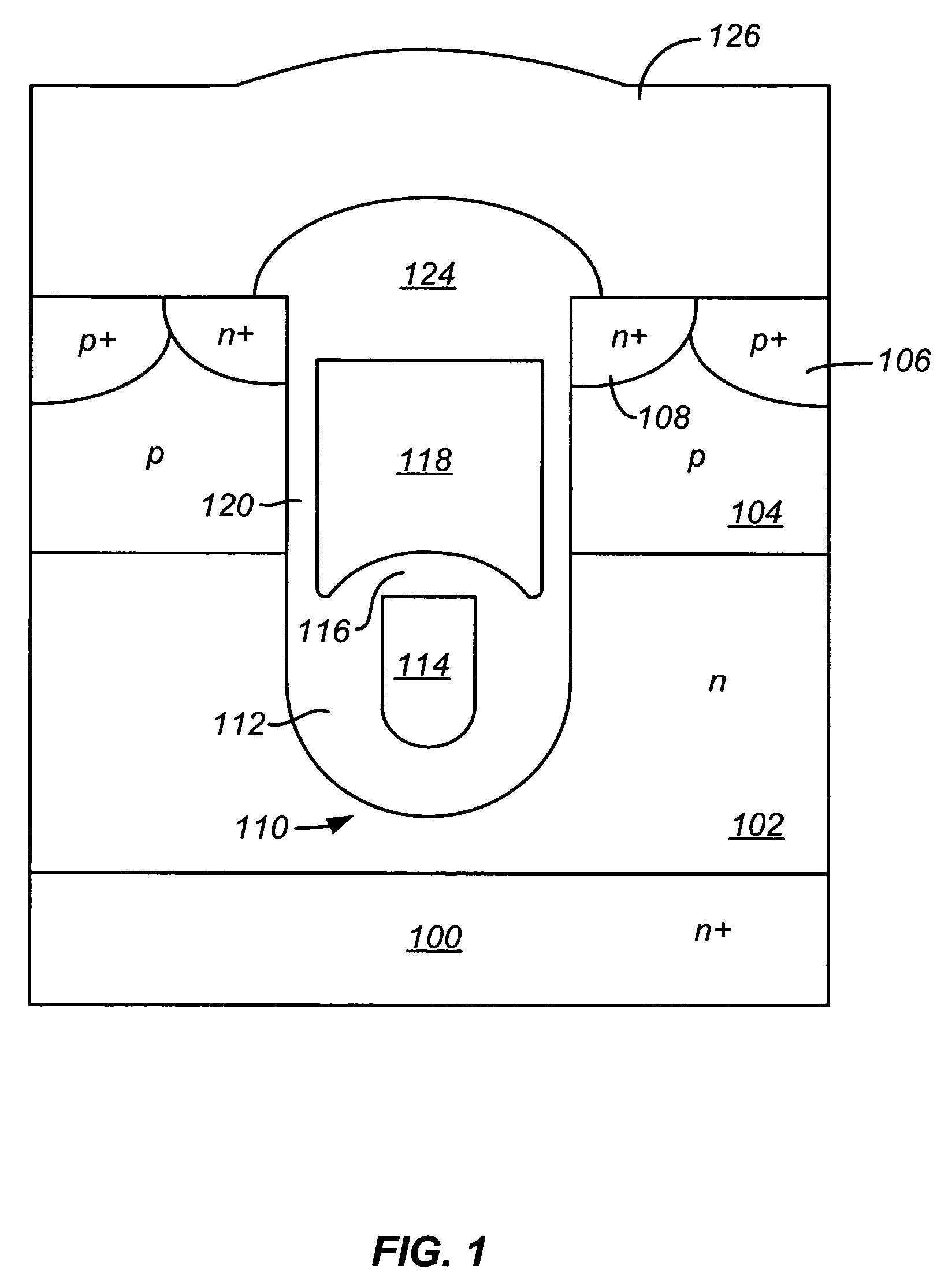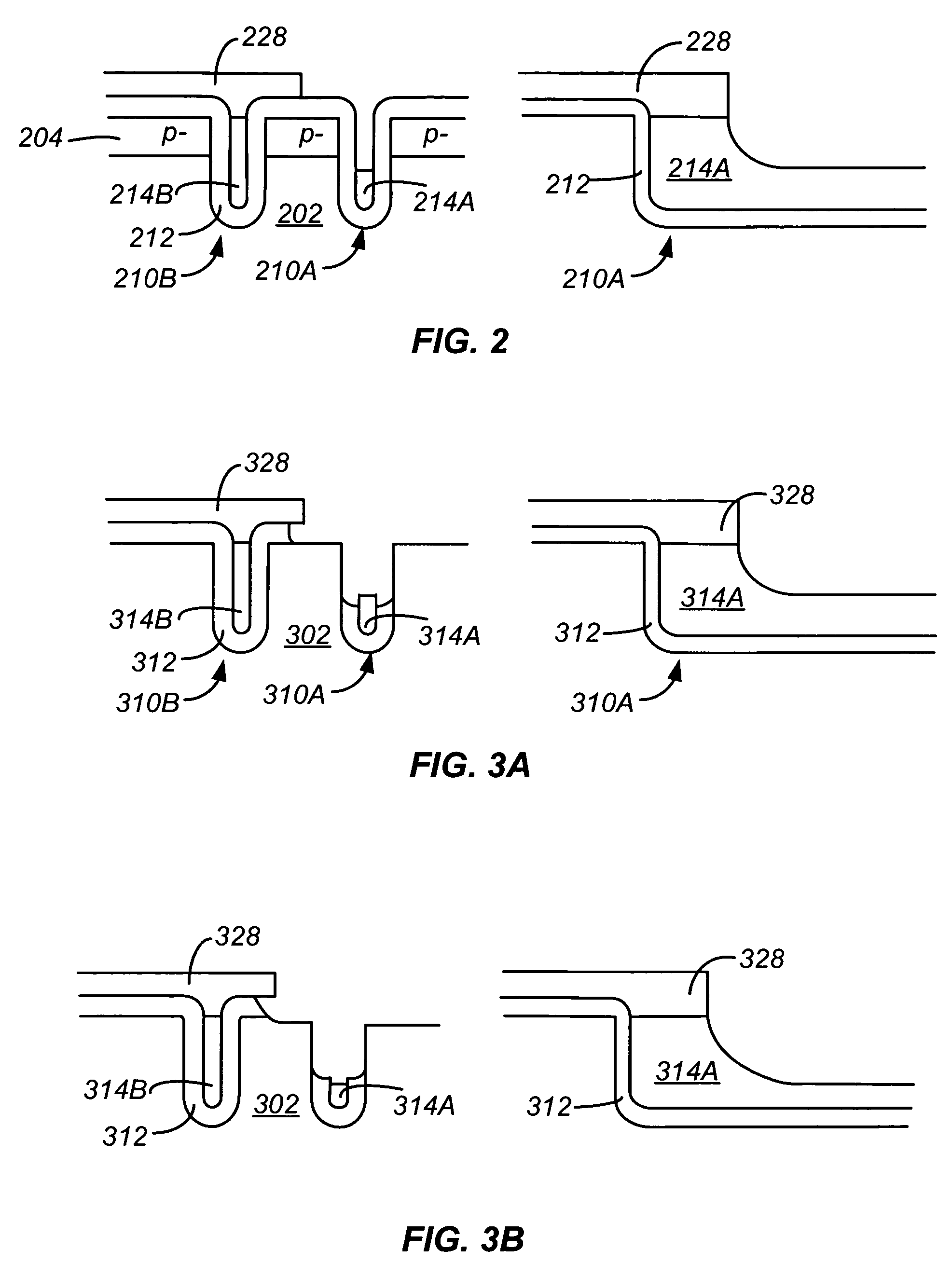Methods for forming shielded gate field effect transistors
a gate field effect transistor and gate field effect technology, applied in the direction of basic electric elements, semiconductor devices, electrical equipment, etc., can solve the problems of low on-state power loss, high power conversion efficiency, and high electric field
- Summary
- Abstract
- Description
- Claims
- Application Information
AI Technical Summary
Benefits of technology
Problems solved by technology
Method used
Image
Examples
Embodiment Construction
[0030]In accordance with embodiments of the present invention, structures and methods for forming a shielded gate trench FET with an improved IED layer are disclosed. Also disclosed are structures and methods for forming shielded gate trench FETs with an improved IED layer and self aligned regions that allow the cell pitch to be reduced without increasing the process complexity. The various embodiments of the invention will be described in further detail below.
[0031]FIG. 2 shows two side-by-side cross sectional views corresponding to an intermediate process step for forming a shielded gate trench FET in accordance with a first embodiment of the present invention. The left diagram of FIG. 2 corresponds to a cross sectional view in the active region of the FET. The right diagram corresponds to a cross sectional view along the dimension perpendicular to the page and through the right trench in the left diagram, showing the termination of the right trench at the edge of the active regio...
PUM
 Login to View More
Login to View More Abstract
Description
Claims
Application Information
 Login to View More
Login to View More - R&D
- Intellectual Property
- Life Sciences
- Materials
- Tech Scout
- Unparalleled Data Quality
- Higher Quality Content
- 60% Fewer Hallucinations
Browse by: Latest US Patents, China's latest patents, Technical Efficacy Thesaurus, Application Domain, Technology Topic, Popular Technical Reports.
© 2025 PatSnap. All rights reserved.Legal|Privacy policy|Modern Slavery Act Transparency Statement|Sitemap|About US| Contact US: help@patsnap.com



